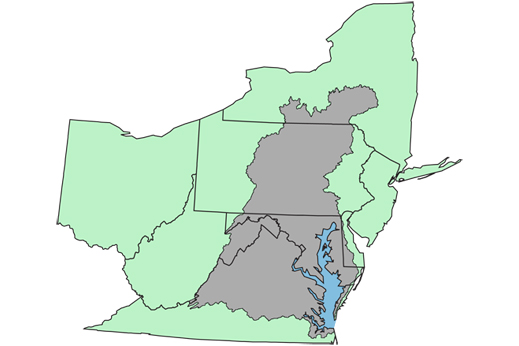WaterShed’s inspiration comes from the Chesapeake Bay and its watershed. Covering 64,000 square miles across six states and the District of Columbia, the Chesapeake Bay watershed includes over 100,000 smaller rivers and streams that eventually drain into the Bay. The bay itself is the largest estuary, or body of water where fresh and saltwater mix, in the United States.
The Chesapeake Bay has a complex balance of salinity and nutrients that must be maintained. Nearly 4000 species of plants, fish, and animals rely on the Bay’s unique environment to survive. Water runoff from the 16.6 million human inhabitants of the Chesapeake Bay watershed and the cities, towns, power plants, and farms that make their lives possible upsets this subtle ecological balance in catastrophic ways. The long-term success of this ecosystem is challenged by inadequate storm water management systems combined with expanding development of houses, businesses, and infrastructure that increasingly put pressure on the Bay.
WaterShed brings attention to the threats the Bay faces. Its design serves as a model for how our built environment can help preserve the richness of watersheds everywhere by managing storm water on site, filtering pollutants from grey water, and minimizing water usage.
To learn more about the Chesapeake Bay, please visit the Chesapeake Bay Foundation.
For more information on watersheds, please visit this USGS page.

